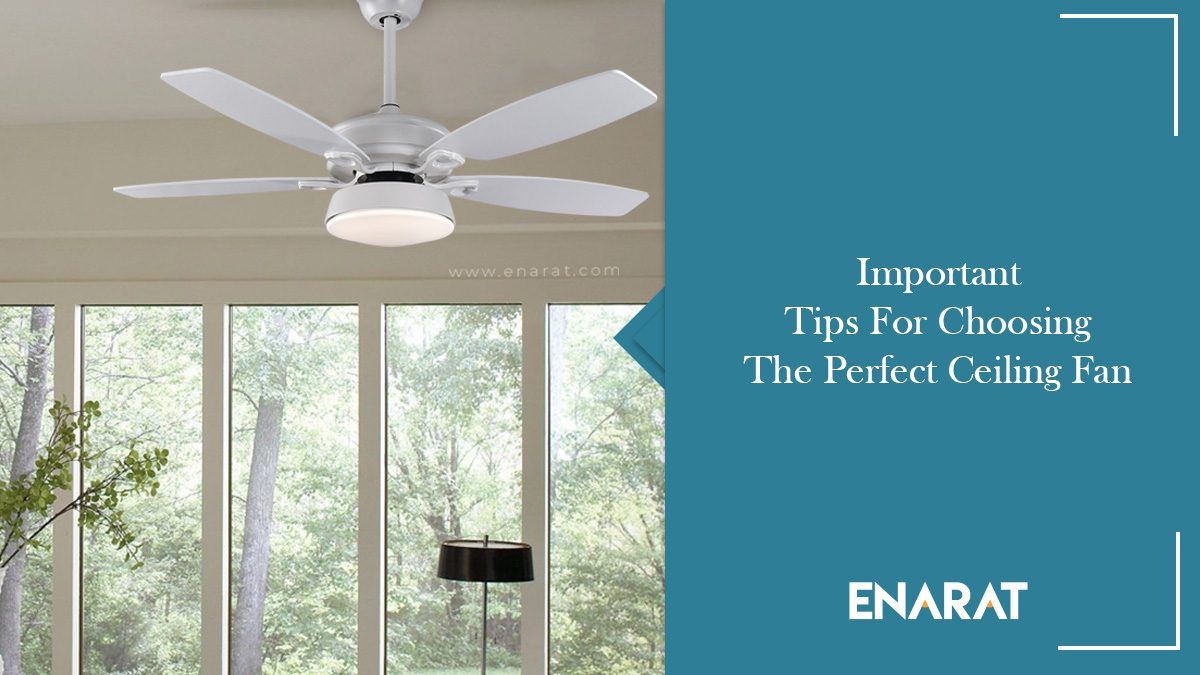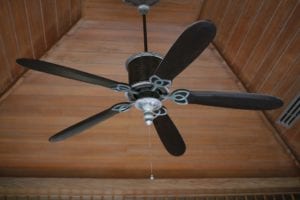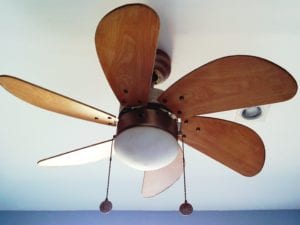With so many variants and options, choosing the perfect ceiling fan and choosing the right size can be a little daunting.
Here are the answers to your questions about choosing a ceiling fan that suits your needs:
How do I choose a ceiling fan size for my room?
The first thing to consider when sizing a ceiling fan is the size of the room in which it will be placed. The square footage of the room determines what size a ceiling fan should be, because a fan that is too small or large for the space will not circulate air properly.
If you don’t know it already, you can measure the size of your ceiling fan by recording the diameter of its blades, or from one blade tip to the other directly opposite it. If the fan has an odd number of blades, measure from the tip of the blade to the center of the fan and multiply this number for measurement.
In large spaces, depending on the shape of the room, another option could be to use two smaller fans.
How can I determine the suspension height of the fan?
The bottom of the fan should be at least seven feet off the ground; Eight to nine feet allows for optimum circulation.
For high ceilings: You can use down mast fans to achieve the proper height. The more space between the roof and the blades, the better for airflow and circulation.
For low ceilings: For rooms with ceilings eight feet or shorter, ceiling mount fans are the ideal choice.
Can a fan light my room?
Most fans come with lighting kits or will provide a compatible option. It will provide overhead ambient lighting, but it may need to be supplemented with other fixtures. Ceiling fans can also be ordered without lights if you prefer.
Can I use a ceiling fan outdoor?
Yes, as long as the ceiling fan has specifications that can be installed outside and is resistant to weather conditions from dust and rain.
How does a ceiling fan work?
In its simplest sense, a ceiling fan works by rotating inclined blades. Tilted blades create airflow that produces better air circulation, helping to “cool” the body.
How do I control the fan?
There are three ways to operate the fan: pull chain, remote control, or wall controller.
Pull chain: The pull chain is located directly on the fan and provides an easy way to adjust the speed and turn the fan on and off (and light it, if it has one).
Remote control: Most suitable for all fan controllers, handheld remote controls allow the fan to operate from anywhere in the room.
Wall Switch: Wall controls are a convenient way to operate ceiling fans such as a light switch for a lamp. If the installation is located near the entrance, then the chance that you forget to turn off the fan when leaving the room is greatly reduced.
What is CFM and ceiling fan airflow?
Airflow determines the amount of air a ceiling fan supplies and is measured in CFMs, which mean cubic feet per minute. CFM measurements are taken when the fan is at high speed, then this number is divided by the watt used. This means that the higher the CFM, the more efficient the fan is and the more air it moves in.
What is a DC motor ceiling fan and what are its benefits?
DC motors are a new addition to home ceiling fans that generate additional torque while consuming less than 70% of a typical ceiling fan’s power. They do this by converting electrical energy into mechanical energy as it rotates.
DC motor fans have a slightly higher initial cost than regular ceiling fans because they need an expensive electronic speed controller. However, its benefits more than make up for it. These benefits include:
Practically silent
Much smaller motors result in smaller, lighter fans
Energy efficiency extends fan life
Higher torque results in faster starting speeds
The possibility of up to 6 different speeds
In cases where lighting is included, DC fans usually use LEDs, which only add to the fan’s energy efficiency.
What should I consider when choosing ceiling fan blades?
The number of ceiling blades is often an important point in deciding which type of ceiling fan to buy, but this is becoming less of a matter of function and more of a personal choice with advancement in technology.
A five or six blade ceiling fan used to translate into greater efficiency compared to three or four blades, but this is no longer the case. Since CFM is a measure of a fan’s airflow efficiency, the number of blades is more relevant to decorating your space style. For example, the four or five blade ceiling fan provides a traditional and balanced look, while the two or three blades fan has a modern and elegant style.
How do different blade finishes affect its function?
The choice of a ceiling blade finish will largely depend on the room you’re in and your budget. The four main materials for the blade and their unique advantages are
- MDF
For the blades of medium density fiberboard (MDF), sawdust and other wood residues are pressed together with a hardener. Then a plate (sticker) is applied to it to protect it and give it its final look. This type of blade is the least expensive and is therefore generally used for inexpensive fans, but not always. Do not hold up well outside well; If there is any moisture, the blade will start to droop quickly after installation. But in dry indoors this type of blade works great.
- Plastic
ABS plastic is used in a lot of fans, mainly because it is easy to manufacture and is inexpensive. Plastic can be molded into almost any shape and can be finished to look like real wood. And ABS blades hold up well on the outside.
- Wood
Wood is best for indoor applications, but it will also work with outdoor moisture. Getting natural wood and processing it into fan blades takes more effort and cost than other materials. Generally speaking, when the fan has “real wood” blades, it is an excellent fan. Most wooden blades are balsa wood – which is solid yet lightweight. Visually, real wood blades tend to have a sculpted appearance, with a thicker profile than standard flat blades.
- Metal
Metal is best for large spaces where the fan is high above the ground. Metal fan blades are also good for outdoors.
With all this information you should be ready to find the right ceiling fan for your specific space.
And always be sure that Enarat team is at your service around the clock.













































